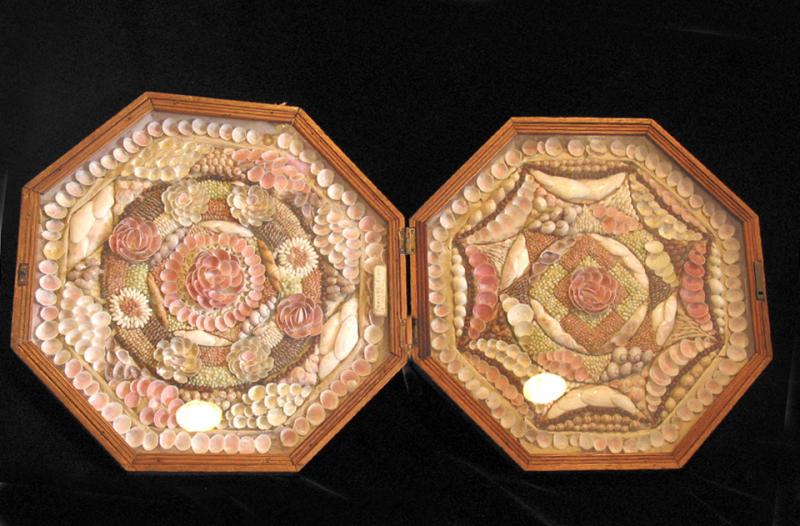Sailors’ valentines: from Barbados to New England
Sailors’ valentines were long thought to have been made by lonely sailors in the 19th century for the loved ones awaiting their return. However, South Dartmouth historian Judith Coolidge Hughs has uncovered the real origin of the intricate works of art.
The valentine — an intricate weaving of seashells into beautiful shapes and forms — have been around for centuries, but they’re not valentines at all. The seashell pieces are souvenirs from Barbados, and have been fashioned since at least the 18th century.
Most of the shell work was crafted by women of color on Barbados. Each woman was given a pattern and a shallow octagon-shaped box. The boxes ranged in size from eight to 15 inches. There were double-hinged and single pieces. Approximately 35 varieties of Caribbean shells were used in the patterns, including sea snails, apple blossom shells, limpets, and corals. The smallest of shells were the most valued and thousands were used in a single piece. A large heart, rose, or butterfly shape would dominate the center of the complex pattern. Victorian sentiments such as “Truly Thine,” “Forget Me Not When Far Away," or a simple “Remember Me” were added later.
Barbados was discovered by the Portuguese in the 16th century, and by 1628 it had become a vastly profitable British colony because of its highly successful sugarcane industry. A majority of the land was divided into sugarcane plantations and worked by hundreds of thousands of African slaves. After a two-hundred-year struggle, slavery was abolished and Barbados became the home of free men and women of color, Quakers, Jews, and younger British and American sons.
In the early 19th century, the Belgrave family was one of the more prominent families of color on Barbados because they owned three very large sugarcane plantations. Brothers Benjamin and George Belgrave opened the New Curiosity Shop in Bridgetown, Barbados in 1823. Within their shop, they started selling what we now call sailors’ valentines. Whaling and trading ships made port in Bridgetown on their homeward voyages and soon Dutch, English, and American sailors began bringing the shell work home as presents. What began as a leisure pastime for middle- and upper-class women became a cottage industry built largely upon the labor of women of color.
The Valentines are mentioned in 1750 by Rev. Griffith Hughs in Natural History of Barbados. In the writing, Hughs described shell work being created on the Island.
I have heard several of the fair sex, who are fond of shell work, frequently ridiculed as wasting their time in a trifling and useless manner. Configuring shells into designs was particularly suited to the genius of women who have a facility for putting shape and colour artificially together.
As part of the 18th and 19th century obsession with natural history, exotic shells became a passion of collectors all over the world, from London to New Bedford.
Today, original sailors’ valentines are worth thousands of dollars and are prized in museums, including the New Bedford Whaling Museum and the Smithsonian.
Although history has been sentimentally bent concerning the origin and intent behind sailors’ valentines, the entrepreneurial foundation of these artfully crafted objects is just as romantic. The charming pieces of art are part of the history of Barbados’ evolution from a land of sugarcane fields worked by slaves, to a free and cherished destination that thrives on tourism. The Valentines are not only a souvenir from a beautiful land; they are a symbol of social justice and progress.
Peggi Medeiros is a book author and columnist, a local historian, as well as a Dartmouth resident.











